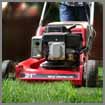 Soundmixer Mike Hall discusses some common noise problems encountered on film sets, breaking them down into situational examples, recommended actions, and even cost factors for the production company...
Soundmixer Mike Hall discusses some common noise problems encountered on film sets, breaking them down into situational examples, recommended actions, and even cost factors for the production company...
Sources of background noise include:
- The Environment (e.g. surf, animals, wind, water)
- Work
- Traffic
- Equipment (e.g. refrigeration, lighting, air-conditioning)
- Film Crew (e.g. base camp, generator, vehicles, footsteps, voices)
Under the above headings, I shall suggest some methods of controlling noise and point out cost factors that may limit our options.
The Environment
Many environmental conditions such as surf, wind, or wild animals cannot be controlled. Production tracks recorded at such noisy locations will be noisy.
Recommendation: Dialog heavy scenes may be set elsewhere Domesticated animals can be removed or confined away from the set. Fountains pools etc. can be shut off when not visible to the camera.
Cost factor: none, we do this now.
Work
Work noise in industrial areas is a type of environmental noise, which cannot be significantly lessened.
Recommendation: Frequently, work noise on the location near the set can be eliminated by scheduling filming on a non-work day; by renting the location with the understanding that no work will be performed while we are there; or that work will stop when we roll.
In the past, we have had to contend with bars and restaurants continuing to serve customers while we recorded dialog.
Cost factor: Location fee may rise. Extras to play workers or customers may be required.
Traffic
Air traffic, boat traffic, rail traffic, and street traffic are examples of urban environmental noise that we probably cannot eliminate and which we must either accept or avoid as settings for dialog heavy scenes.
Recommendation: Local street traffic or foot traffic near the location can be stopped temporarily during filming.
Cost Factor: Permits may be more expensive, More police may be required, or more A.D.’s may be required.
Equipment
On actual locations such as private homes, stores, bars and restaurants, air conditioning units, fans, blow beer coolers, refrigerators, games, music systems and practical lights, may generate noise.
Recommendation: Prior discussion with the manager/maintenance man is frequently all that is necessary for such noisy machinery to be shut off.
It is sometimes necessary for a P.A. or A.D. to turn units on and off when we roll sound.
Cost Factor: None, we currently do this.
Film Crew
Motor noise and work noise from the base camp can be controlled. In the silence of the desert, I found that voices and motors at base camp were still audible at 800 feet away. At 1000 feet away, no sounds were audible. I walked 1000 feet in about 5 minutes. 1000 feet is about 2 tenths of a mile
Recommendation: All non-lighting generators and all support vehicles should be collected at base camp. includes special effects workshop, props, wardrobe, dressing-rooms, honey wagon, etc.
Supply all power to base camp from one large, quiet generator The BBL honey wagon has an on-board amp. Generator.
Cost Factor: Hook-up to generator, distribution box, bandit to reach all affected vehicles, and adapter for 120 volt a.c.
On rural exterior locations base camp should be at least 1000 feet from any set. On urban exterior locations, base camp should be at least 500 feet from any set.
When shooting interiors in an urban setting with street noise, it is not necessary to place the base car 500 feet away.
Recommendation: rather than placing base camp on the street in front of the location, it be placed 100 to feet away around the corner on a side street.
Cost Factor: Shuttle car, permits
In the past, we have frequently placed the lighting generator next to one of the walls of the building we are using as a set.
Recommendation: spot that generator at least 150 feet from the set. 150 feet is about three lengths of bandit.
At the Studio, I recommend that we spot the generator on the East Side of the building near the steps up to the shipping department.
Cost Factor: More bandit may be required.
If everyone gets the message: “Lock it up... Rolling” we should not hear any more idling engines, conversations, work noise etc. during sound takes.
Recommendation: all walkies monitor one channel and that any conversations of more than a few words be moved to other assigned channels. The walkies should be reset to channel one at the conclusion of any conversation. Channel one is the ‘calling’ channel and channels 2-6 are the ‘talking’ channels.
Rent or purchase Motorola GP 300 walkies which have a priority channel override function. This would permit an AD on channel one to call out ‘lock it up’ on any channel of any other un-keyed receiving walkie
Cost Factor: none, we currently rent GP 300 Walkies.
